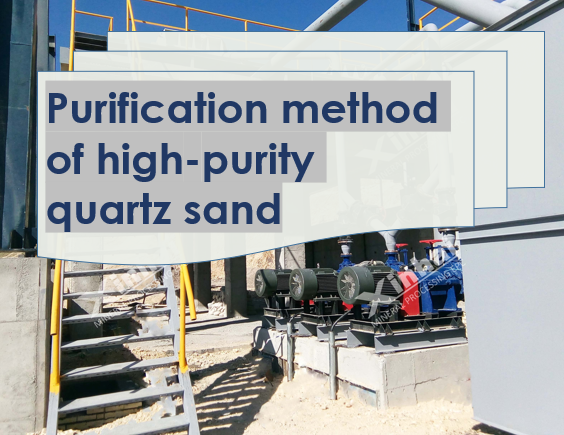Purification method of high-purity quartz sand
2024-08-15 Xinhai (1516)
2024-08-15 Xinhai (1516)
If you have any questions, please contact us through the following ways, we will give you more and better assistance!

Quartz sand is a non-metallic mineral. Its main component is silicon dioxide. Its color is milky white or colorless and translucent. Its aggregates are often granular, dense, clustered, or cryptocrystalline stalactites. It accounts for about 60% of rock-forming oxides in the earth's crust, so its mineral reserves are very rich and widely distributed around the world.
Ordinary quartz sand is mainly used in the construction industry. In addition, quartz sand is also widely used in casting, rubber, glass, ceramics, refractory materials, metallurgy, chemical industry, abrasives, plastics and other fields. As the purity of quartz sand increases, its value continues to increase, especially in the high-tech field, where the purity of quartz sand is extremely high.
High-purity quartz sand refers to quartz sand with a SiO2 content higher than 99.9%. Its chemical properties are stable. Except for HF, it is insoluble in other acids and slightly soluble in KOH solution. There are many types of impurities in quartz sand in my country, and the occurrence state is complex and the distribution is different. It is difficult to purify quartz sand. The earliest raw material for producing high-purity quartz sand was natural crystal, but with the gradual depletion of natural crystal resources, it has become an inevitable trend to extract high-purity quartz from ordinary quartz sand.

The physical method mainly removes impurities in quartz sand through water washing-graded desludging, scrubbing, magnetic separation and flotation, and can also combine several processes to further remove impurities.
In the quartz sand beneficiation process, fine particles with a particle size of less than 0.1 mm are usually called ore mud. For quartz sand with a large amount of clay and ore mud, as the particle size becomes finer, the grade of silicon dioxide gradually decreases, while impurities such as iron and aluminum increase instead. The water washing-graded desludging method can effectively improve its grade.
For the film iron and adhesive impurities on the surface of quartz sand, the effect of water washing-graded desludging is poor, which requires the use of mechanical force and the abrasive force between sand particles to remove the film iron and adhesive impurities that adapt to the sand surface. After graded desludging, a better impurity removal effect can be achieved. Summarizing the experience of predecessors, the effect of rod mill scrubbing is the most ideal. The general scrubbing concentration is 50%~60%. The scrubbing time should be determined according to the nature of the ore to initially meet the product quality requirements. The time should not be too long to avoid excessive energy consumption and excessive wear on the equipment.
Gravity separation is a mineral separation method that uses the differences in relative density, particle size, shape between mineral particles and the differences in movement rate and direction in water, air or heavy liquid to separate different minerals. For quartz sand ore, spiral concentrators, chutes, shaking tables and other gravity separation equipment are often used.

Magnetic separation can maximize the removal of weak magnetic impurities such as hematite, limonite and biotite contained in quartz sand particles and strong magnetic minerals such as magnetite. For weak magnetic impurity minerals, strong magnetic machines above 1 T are often used, and for minerals with strong magnetic impurities, weak magnetic machines or medium magnetic machines are often used.
The most effective method to remove iron impurities in iron mineral particles or in mineral particles such as biotite, garnet and hornblende, as well as aluminum in feldspar, is flotation. Currently, flotation mainly uses acidic conditions and can be divided into fluorine flotation and non-fluorine flotation according to the different reagents used.